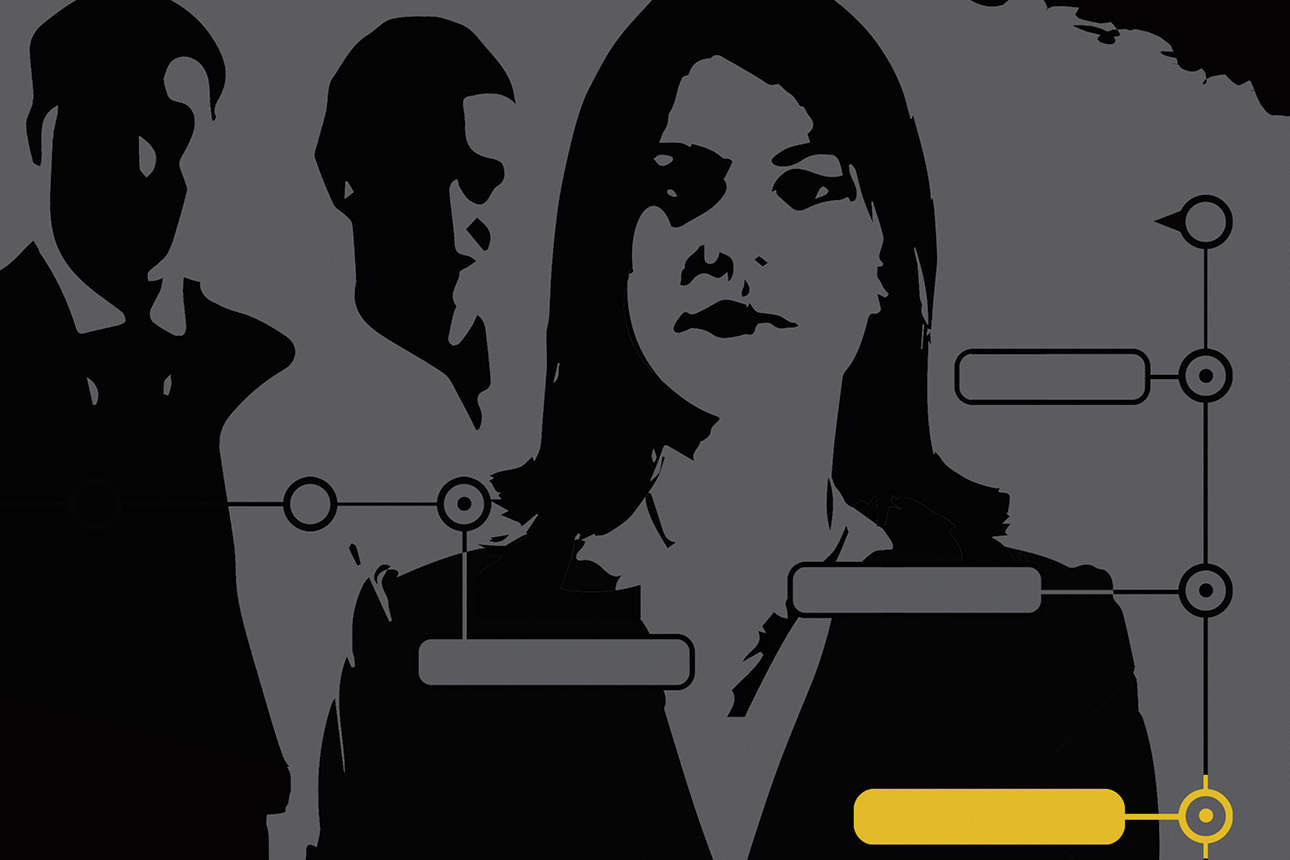5 Musts for Next-Gen Leaders
As digital technologies transform organizations and work, here’s what leaders will need to get right.
Topics
Frontiers

Image courtesy of Gordon Studer/theispot.com
Effective leadership isn’t ageless or immutable. Periodically, new technologies overturn established modes and sweep aside executives who don’t adapt.
For most of the 20th century, after transformative technologies made it possible to measure the minutiae of human work, leaders concentrated on maximizing productivity and efficiency, many taking a command-and-control approach. But this autocratic style failed disastrously when upstart Japanese companies used newer technologies — focused on quality — to enter Western markets. In the mid-1980s, unwilling to make the organizational and leadership changes required by this shift in competition, American companies went bankrupt at rates not seen since the Great Depression. Those that survived augmented their long-standing functional silos with teams that enabled cross-functional collaboration, while their leaders learned to empower employees to make decisions.
Get Updates on Transformative Leadership
Evidence-based resources that can help you lead your team more effectively, delivered to your inbox monthly.
Please enter a valid email address
Thank you for signing up
Today, business is being transformed again — this time by digital technologies. They render some elite skills obsolete and widely distribute others; make work more thought-driven than muscle-powered; shed light on unpredictable customer needs that create disproportionate value; reveal information regardless of the merits of concealment; and affect — and are affected by — environmental conditions near and far. They also connect companies and employees by distributing work across geography and over time.
Current and aspiring leaders must respond to this new wave of change in five key ways.
1. Truly champion inclusivity. Senior executives are (still) mostly white Western men — and they are the ones who identify and develop their companies’ future leaders. Thus, their demographic profile, behaviors, and mindsets are self-reinforcing. People who don’t conform — including women, LGBTQ employees, racial minorities, and those from different cultures and nations — get fewer opportunities to rise to senior leadership positions.
It’s an anachronistic model. Digital technologies distribute mission-critical work to all kinds of employees from other organizations and distant cultures. They have also accelerated a widespread shift from physical work to knowledge work. This means if talented people feel estranged from their leaders, they can withhold intellectual contributions and even walk away.
I’ve surveyed 700 midtier to senior executives, mainly from multinational organizations, and conducted formal and informal interviews with top leaders and high-potential employees at select U.S., European, and Asian companies. My research suggests that leaders across the world are failing to motivate people who don’t resemble them, ascribe to their traditions, or work in similar settings.
References
1. W. Bennis and R.J. Thomas, “Crucibles of Leadership,” Harvard Business Review 80, no. 9 (September 2002).
2. S. McChrystal, T. Collins, D. Silverman, et al., “Team of Teams: New Rules of Engagement for a Complex World” (New York: Portfolio/Penguin, 2015).
3. “IBM 2010 Global CEO Study: Creativity Selected as Most Crucial Factor for Future Success,” press release, May 18, 2010, www-03.ibm.com.
4. J. Mueller, J.A. Goncalo, and D. Kamdar, “Recognizing Creative Leadership: Can Creative Idea Expression Negatively Relate to Perceptions of Leadership Potential?” Journal of Experimental Social Psychology 47, no. 2 (March 2011): 494-498.
5. J. Mueller, S. Melwani, and J.A. Goncalo, “The Bias Against Creativity: Why People Desire but Reject Creative Ideas,” Psychological Science 23, no. 1 (January 2012): 13-17.
6. A.B. Hargadon and B.A. Bechky, “When Collections of Creatives Become Creative Collectives: A Field Study of Problem Solving at Work,” Organization Science 17, no. 4 (July-August 2006): 484-500.
7. “Welcome to the Crisis Era: Are You Ready?” CEO Pulse on Crisis, PwC, 2017, www.pwc.com.
